May 2023: After two prior trips to Iraq to visit Kurdistan and the southern marshes where I stayed with the Marsh Arab Medan people, I wanted to return and see the central part of Iraq. I only had a few days in Iraq on a layover to Nepal for a two weeklong trek in the Mustang Valley, so I reached out to my Iraqi friend, Bahaa that I had met during my previous trip to the southern marshes. Bahaa was gracious enough to offer to show my friend me and my friend Jimmie around Baghdad, Babylon and Karbala while letting us stay in his home.
My first flight of the trip from Sky West Airlines, United Airlink from San Diego to Los Angelas (LAX), interesting enough was flown by Jimmie and Jimmie gave me a quick tour of the cockpit before take-off. Then once in LAX, he quickly changed out of his uniform and into his backpacker clothes, and we set off to the middle east on our 15-hour flight via Qatar Airlines.

A lot had changed since my previous visit to Iraq in March 2017. For one, the war with ISIS was over and the Iraq had stabilized considerably since 2017. ISIS had been defeated and driven deep into the deserts of Anbar Province. There were far less bombings and terrorist attacks then there used to be and Iraq, once nearly impossible to visit for the independent tourist, was now offering a visa on arrival for many nationalities including Americans. This allowed me to visit for only a few days to see my friend Bahaa and to see some of the other ancient sites around Baghdad on my way to Nepal. During my previous trip in Iraq, I was concerned about security but during this one I wasn’t, and Jimmie and I did little to try and blend in and avoid looking like foreigners. We couldn’t anyways as most Iraqis in the middle of Iraq adopt western appearances and clothing. Even though most people identified us as westerners some weirdly enough asked if we were Iranian or even Kurdish.
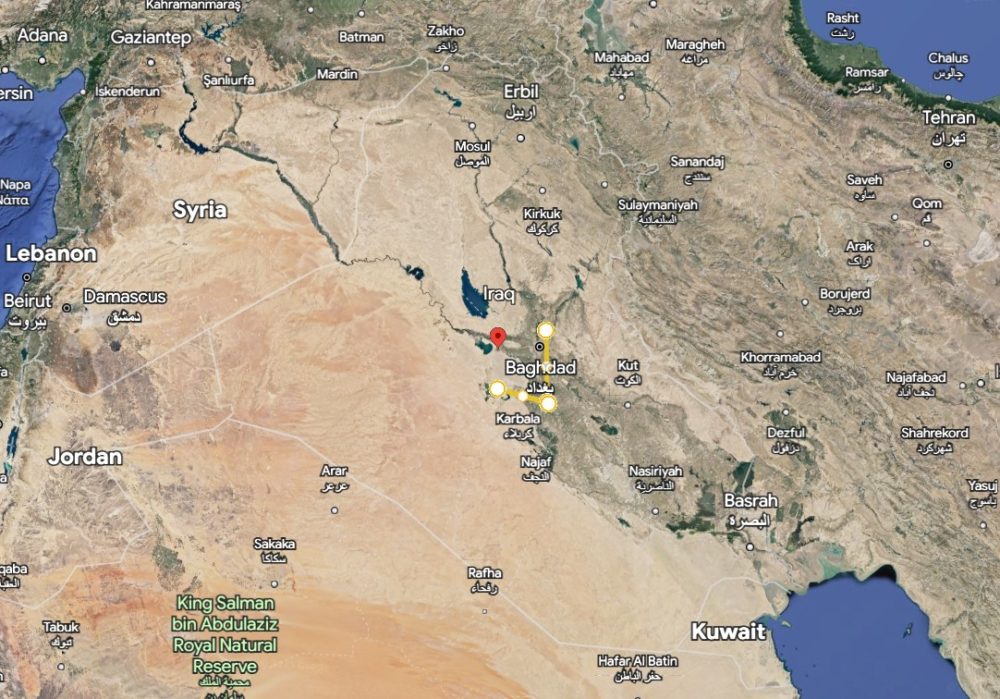
I arrived in the evening via Doha on Qatar Airlines. There were no obvious looking tourists on my flight, and I sat next to an American war journalist and his son, who was returning to Iraq to see how the country had changed since he was previously there on assignment during the peak of combat. The visa on arrival process was simple and straightforward and the Iraqi immigration officers were welcoming. My friend Bahaa was waiting fr Jimmie and I outside of the airport. Due to tight security controls, no one except for airport employees and passengers is allowed to enter the airport. Everyone else was required to wait outside of the security walls approximately 10 miles away from the airport. Jimmie and I hired one of the approved taxi cabs that had been approved by security services to take passengers to and from the airport from the airport security perimeter. We passed through multiple airport security checkpoints designs to prevent terrorist attacks and along the side of the airport road I noticed signs honoring the late Iranian General of the Quds Force, Qasem Soleimani, who only 3 years ago had been assassinated on this very airport road by a US airstrike. One of the unintended consequences of US foreign policy by removing Saddam Hussein from power was that Iraq with its large Shiite population would grow closer to Iran, another country with a large Shiite population. Martyr murals honoring the late general would be a common sight during my next few days in the Shiite areas of Iraq.
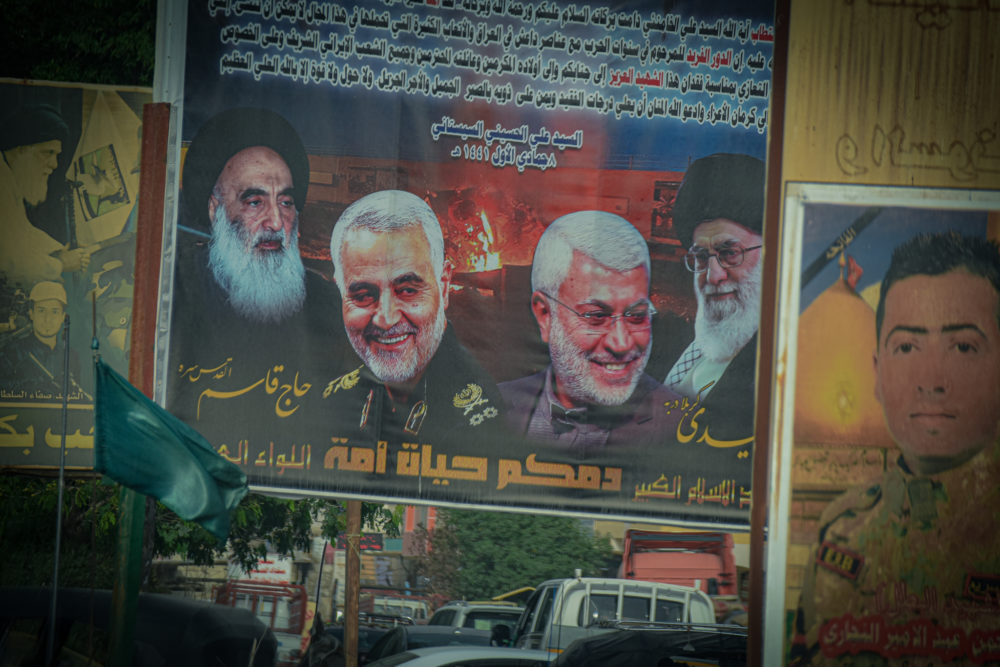
Sign honoring the late Iranian General of the Quds Force, Qasem Soleimani, who only 3 years ago had been assassinated on this very airport road by a US airstrike. The sign also honored the Islamic Clerics or Ayotalhas of Iran
Once on the outside, we met Bahaa and his friend, and proceeded to have dinner at a nice restaurant in Baghdad before driving to Bahaa’s house not far away from the ancient city of Babylon where we would spend the night in his guest room.
The next morning Bahaa and his friend drove Jimmie and I to visit the ancient city of Babylonia. Iraq is dubbed the cradle of civilization due to it being the origin of some of the oldest and greatest civilizations that the world has known such as Sumerian and the latter Babylonia. Babylonia was founded almost 4000 years ago and according to the Bible was at one time the wealthiest and greatest nation in the world, which ruled over modern day Iraq and the Tigris and Euphrates Rivers between Iran, Syria and Kuwait. The greatest ruler of Babylonia was King Nebuchadnezzar II, who also conquered Jerusalem and built his city and temple near the Euphrates River and the modern city of Hillah, Iraq. Saddam Hussein, one of the most ruthless dictators of modern history, who saw himself as a second coming of King Nebuchadnezzar II and Supreme Ruler of Iraq, built one of his palaces overlooking the ancient, ruined city of Babylonia. Saddam wanted to rebuilt Iraq into the great civilization that it once was, and he embarked on a shawdy renovation project to rebuild the great city of Babylonia. When Saddam discovered Nebuchadnezzar stamped the bricked of the city with his name, Saddam, who wanted every Iraqi to know he restored Babylonia and was the new greatest leader of Iraq, decided to do the same and to this day the oldest bricks of the foundation of the city are stamped with Nebuchadnezzar’s name and the new bricks of the top layers of the city are stamped with Saddam’s name.
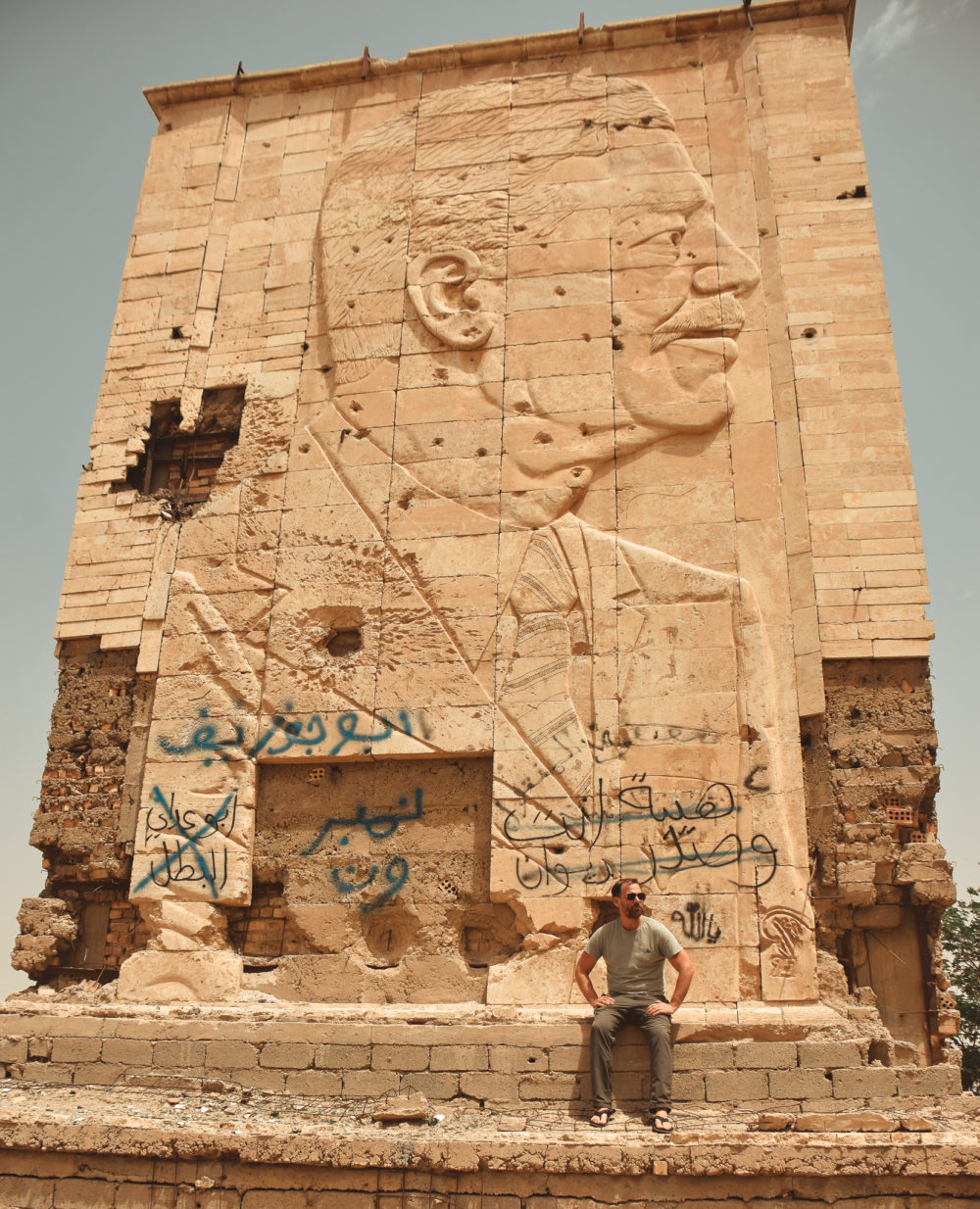
Me sitting in front of a stone mural of Saddam Hussein near the gates of Babylonia. The old mural now abandoned to decay showed signs of being used as target practice for AK 47’s and RPGs.
As was the case with everywhere we visited in Iraq, we seldom spotted other foreigners and we were free to wander among the ruins of most ancient places alone. Babylonia was no exception. Even though much of the ancient city had been horribly restored by Saddam, the old foundation and some of the old walls of King Nebuchadnezzar remained. Regardless, the city with its ancient and modern history was fascinating. We hired a local guide at the gate to provide us with some of the history.
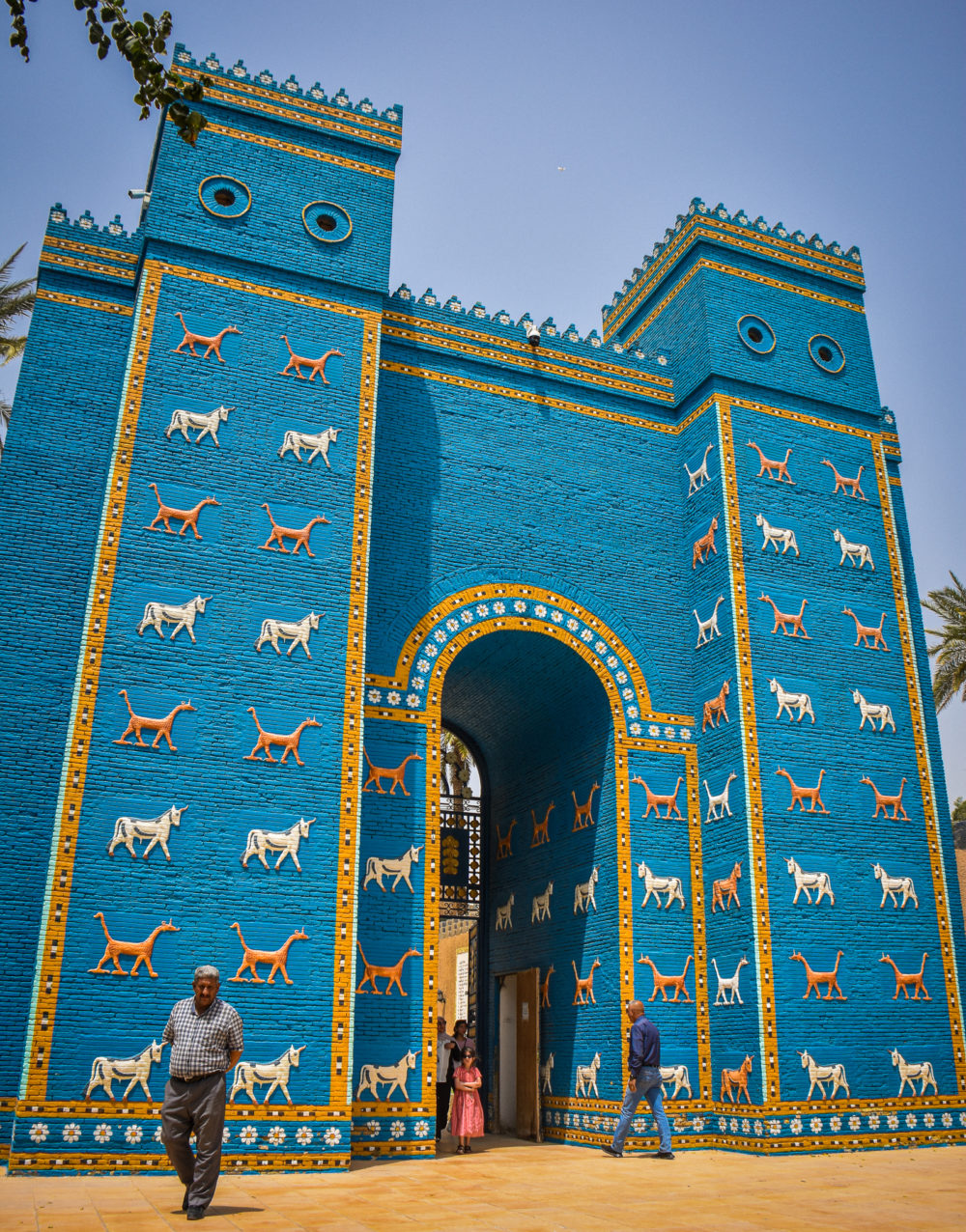
Ishtar Gate-Entrance to Ancient Babylonia. The German archeologist who excavated the gate in the early 1900s, brought back segments of the gate to Germany and to this day pieces of the gate are located in various museums around the world. The gate that currently stands today is a replica built by Saddam Hussein.


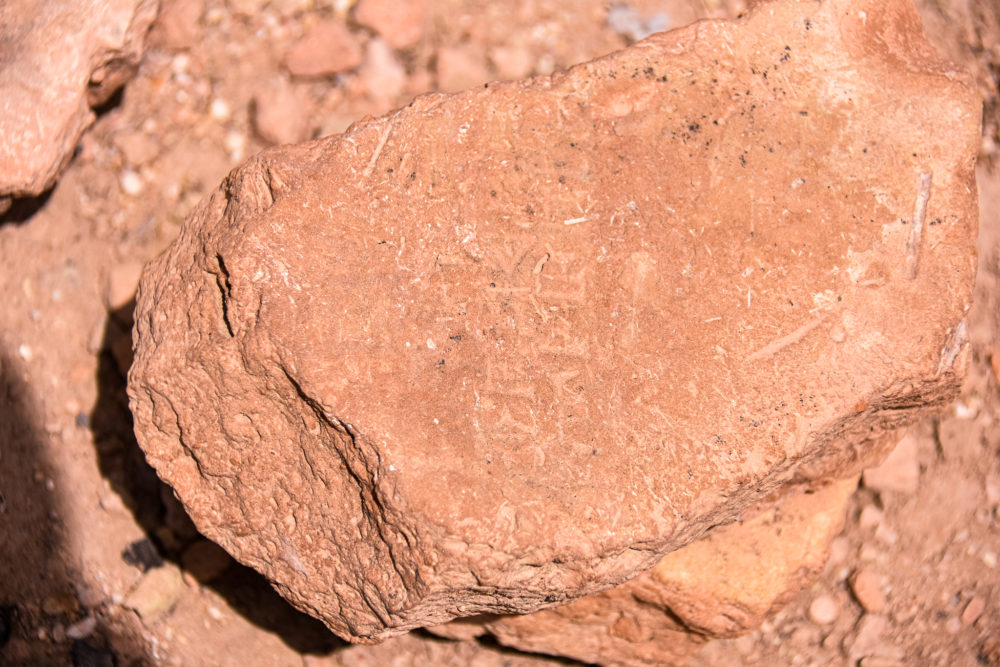
Stones lying on the ground with the stamped name of King Nebuchadnezzar on them were just haphazardly lying on the ground for anyone to pick up and smuggle out of the city. As tempting as this was, the recent arrest of an elderly British man came to mind, who was arrested at the airport when exiting the country for having one small rock in his possession that the Iraqi authorities claimed was an antiquity and is now facing life imprisonment and possibly even execution.
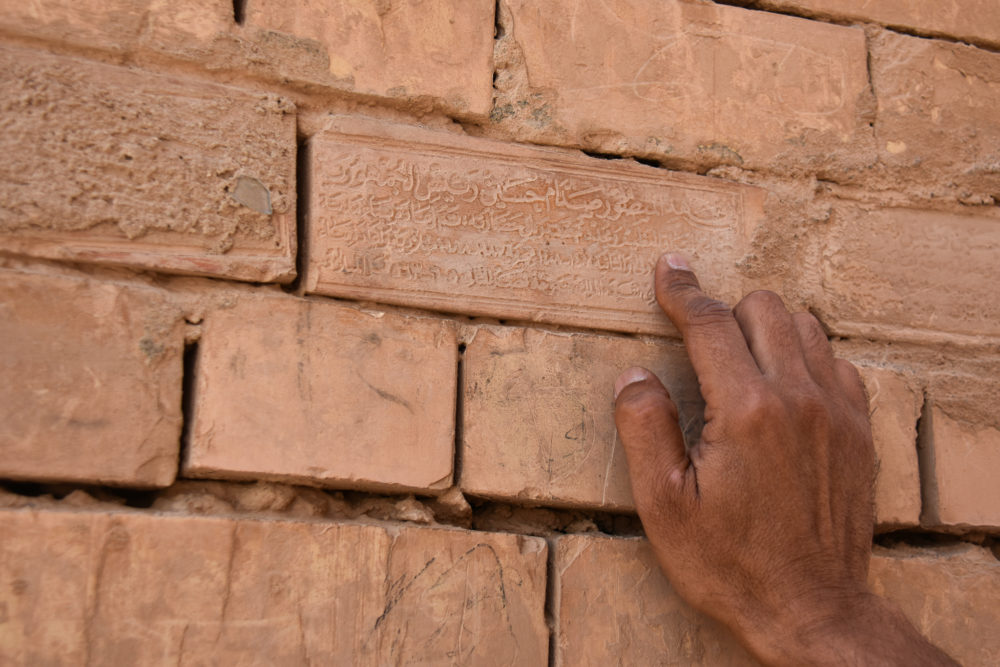
In the nearly 24 years Saddam was in power and ruled over Iraq as a strong man dictator, he built 100 palaces throughout the country. Out of paranoia, he was very secretive of his travels and never announced his arrival too any one given palace, so everyday staff that worked at a palace would have to prepare his meals and the furnishings in the event that he did appear. To be unprepared for Saddam’s arrival would be a guaranteed death sentence.
One of Saddam’s palaces was built on an hill overlooking the ancient city of Babylon so that he could stare down at the city and relish in his rule over the ancient kingdom. Despite the small fortune involved to build it, Saddam was only believed to visit the palace just a handful of times.
The palace today is abandoned, covered in graffiti and vandalized. The Iraqi government wants to restore it and make it into a museum and currently the area is secured by Iraqi police to prevent any further vandalism and a small entrance fee is required to enter.
Once inside, we were free to wander the enormous rooms of the palace with the exception of the upstairs which was blocked by barbed wire evidently because the 2nd floor was unstable and someone had fallen to their death or there were unexploded ordinances or remaining booby traps.
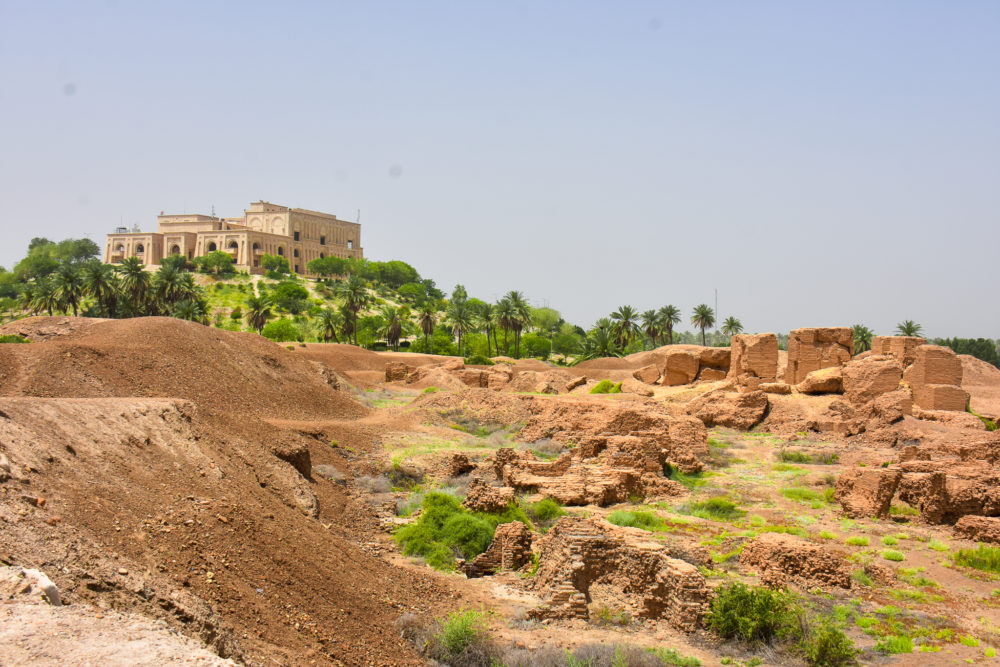
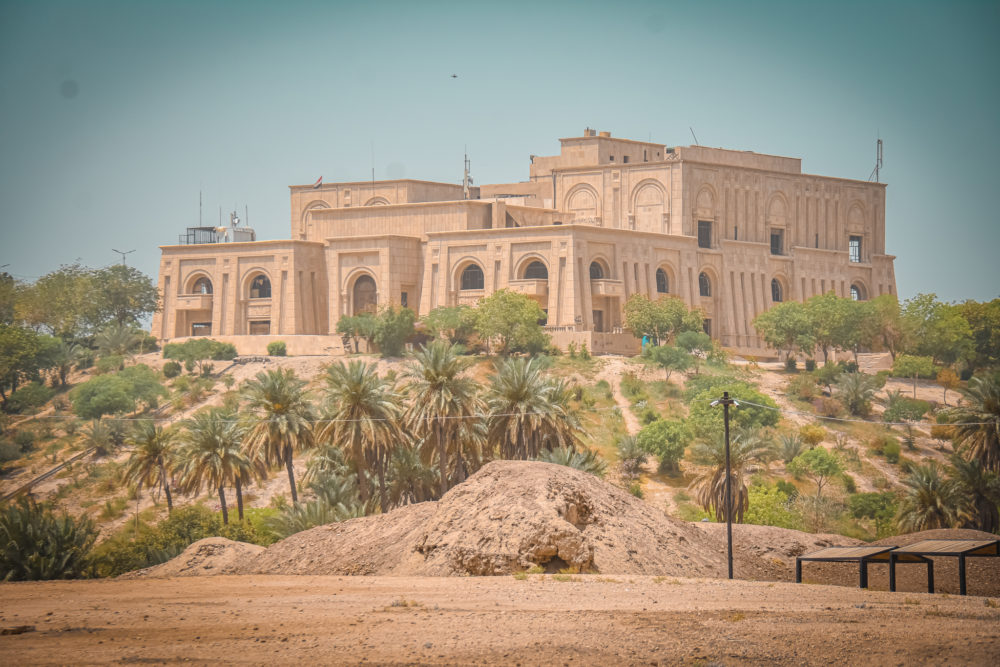
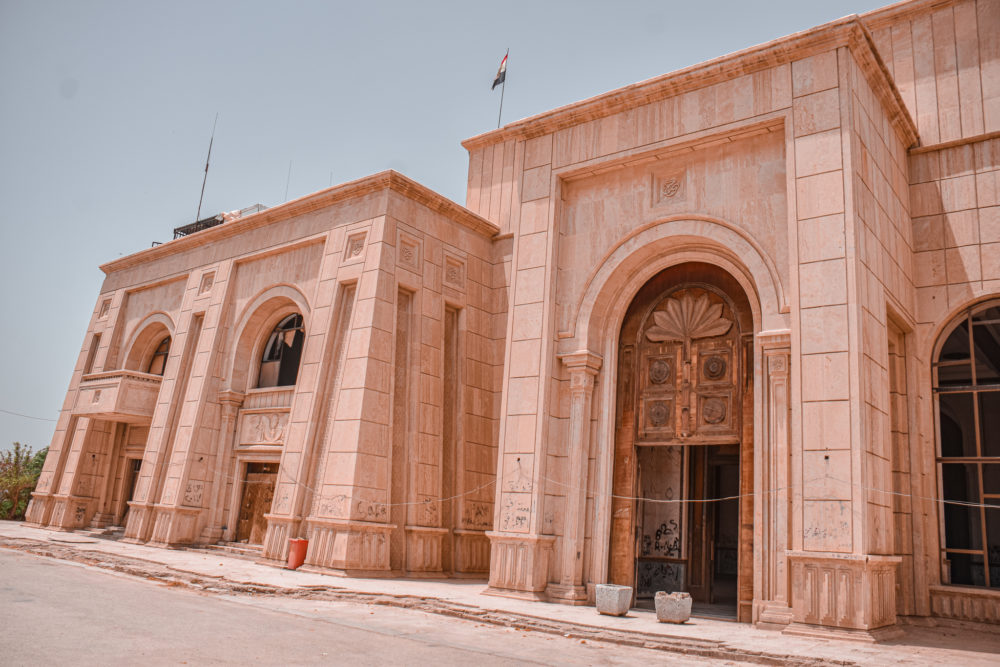
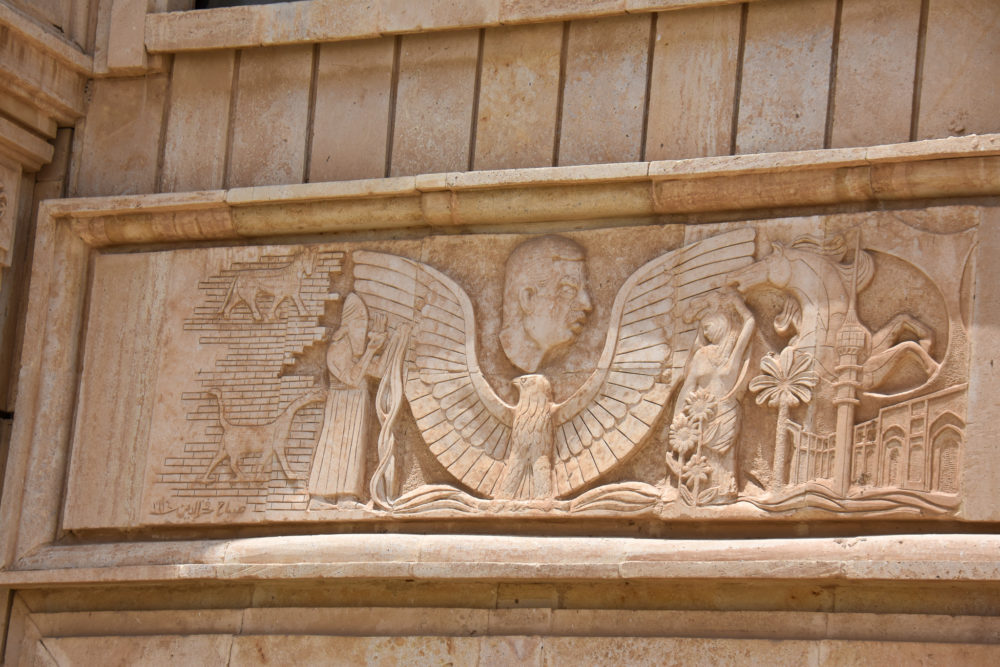
Engravings of Saddam in the entrance of the Palace
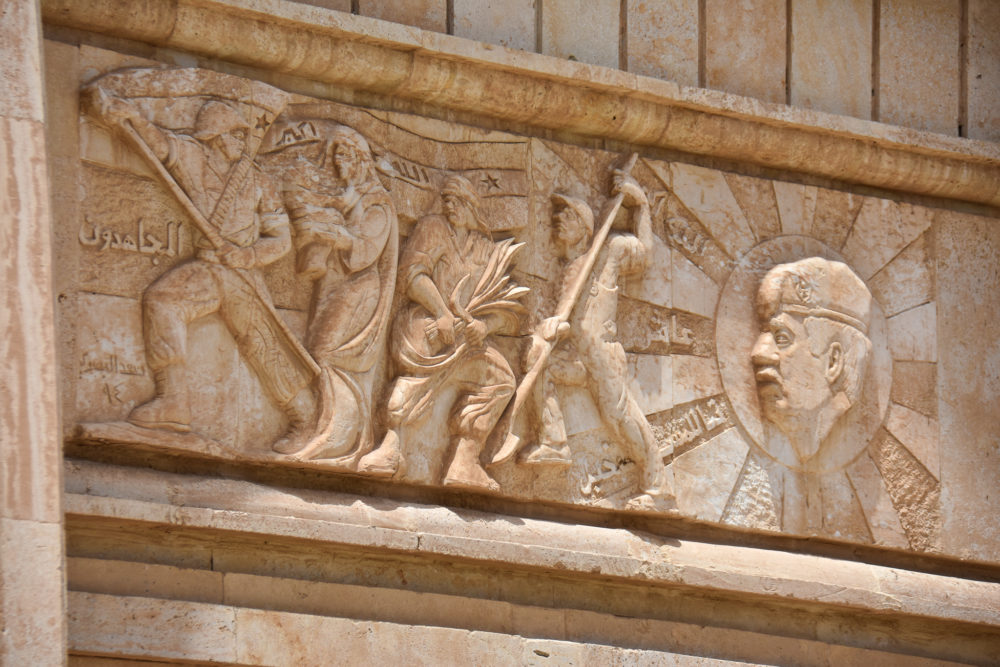
Engravings of Saddam in the entrance of the Palace

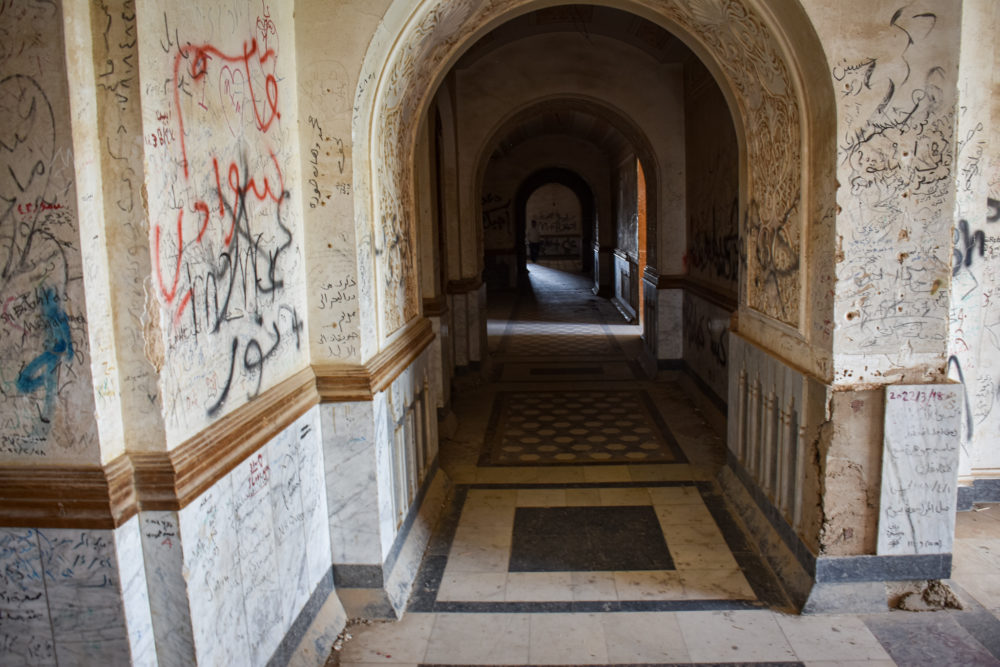
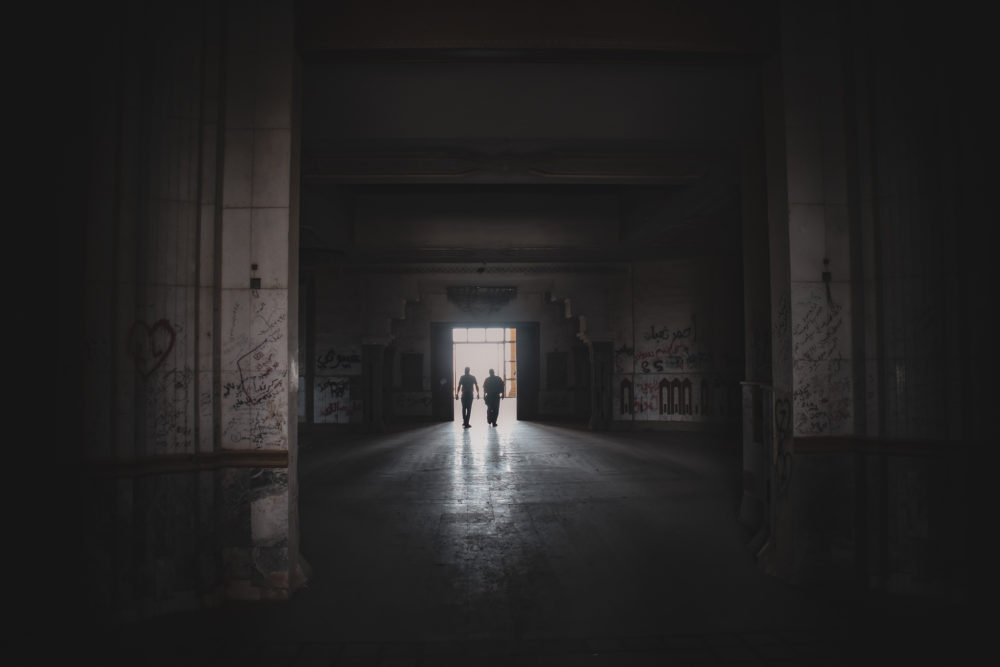

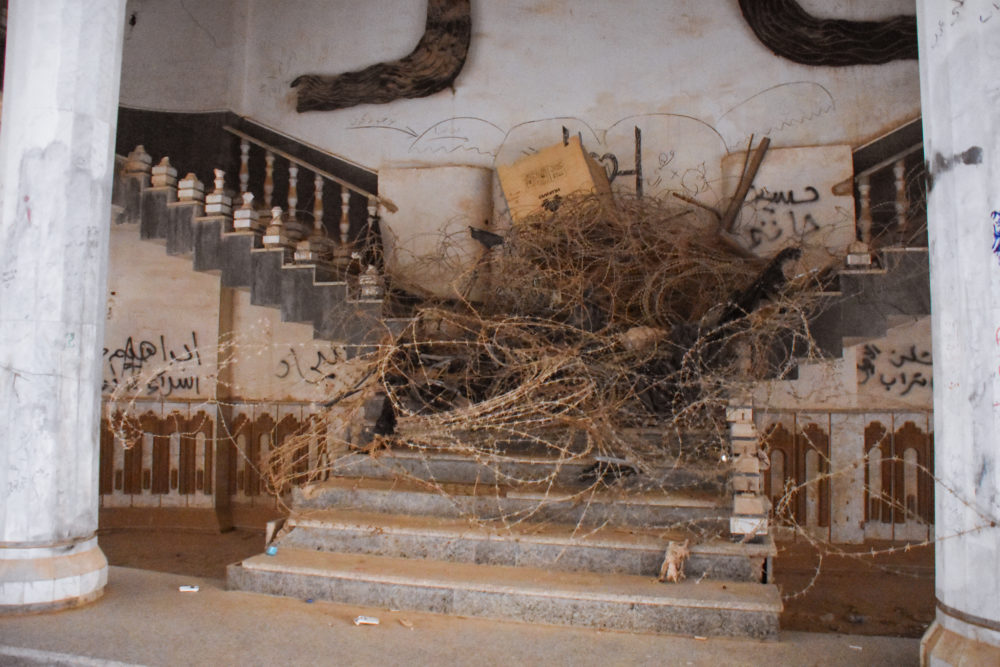
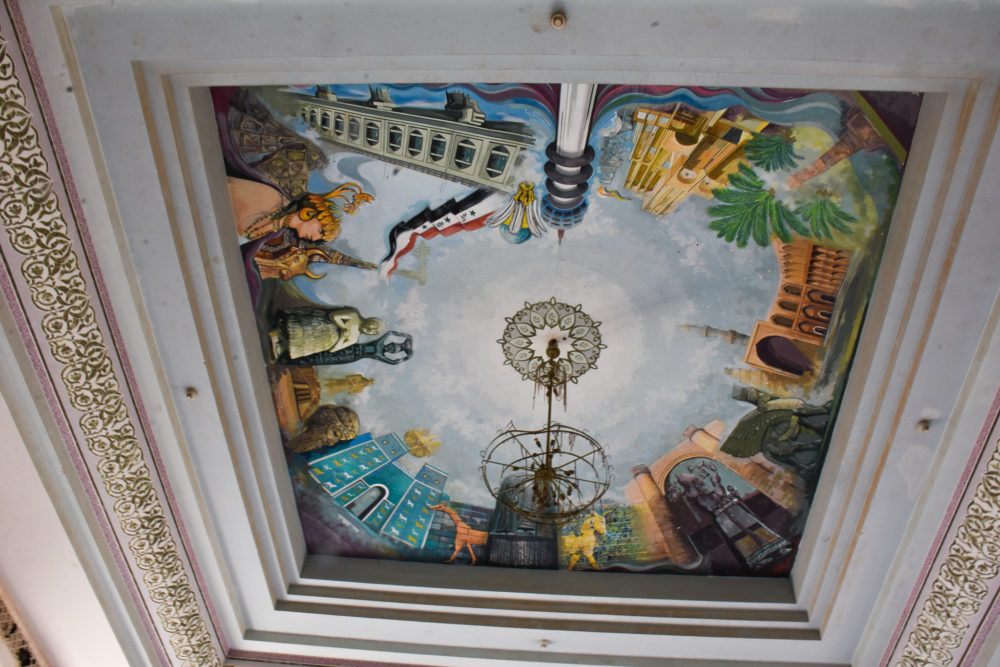
Just outside of Babylonia is the ruined tower of Borsippa identified in Arab culture as the tower of Babylon, the biblical tower built to reach the heavens by the Babylonians in 900 BC. According to the bible the construction was halted when God changed the languages of the builders so that they could no longer communicate. God would eventually destroy the tower and the stones of the tower still bare evidence of being burned by an extremely hot fire and are charred black. The ruined tower itself is only approx. 50′ tall but it sits on top of a giant formidable Sumerian ziggurat that has not been excavated.
During our visit, the site is secured by the police and was closed. Borsippa is not a place visited by tourists and lacked any tourist infrastructure, however it appeared as if Iraqi authorities were trying to change this and build a wooden walkway. We attempted to enter Borsippa via its gate at a mosque, however the first police officer declared the site closed. After checking with another police officer, he agreed to open ot for us and escorted us to the front gate, asking us for a photo together on his phone before leaving us to wander freely in the ruins by ourselves.
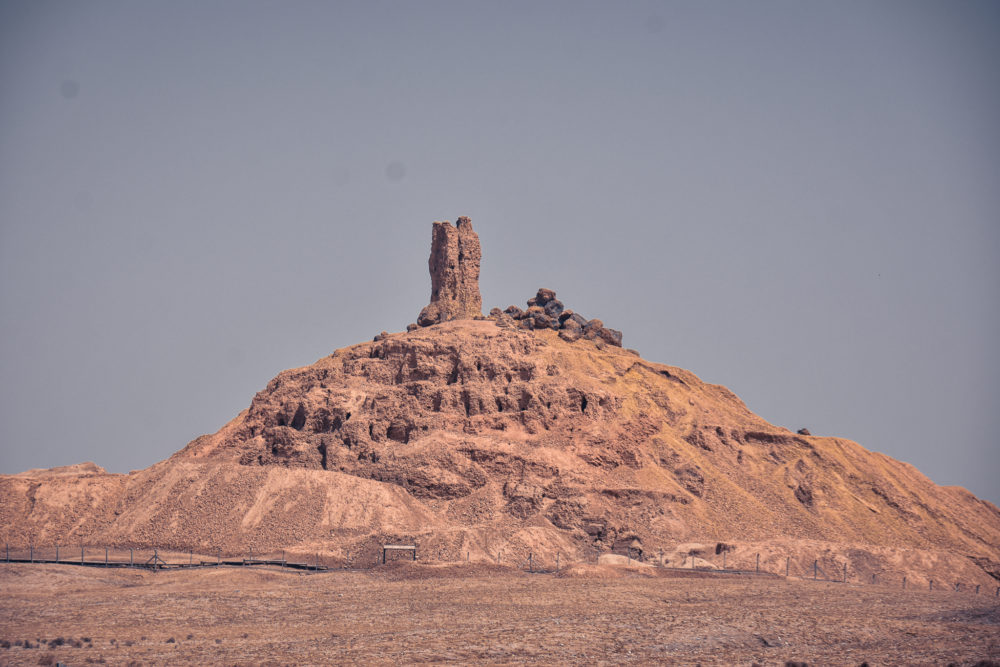
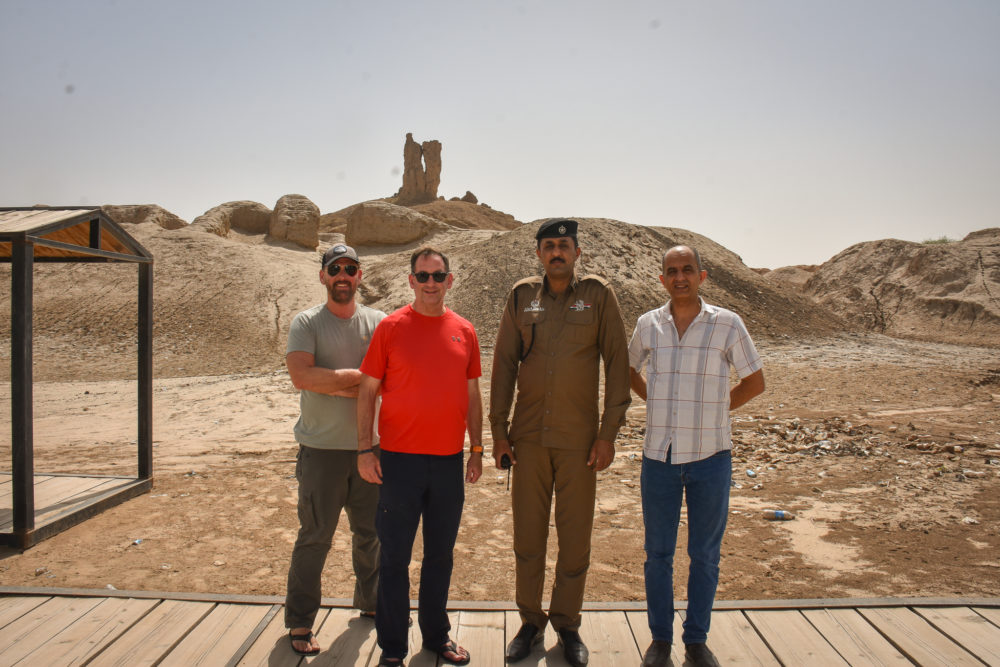


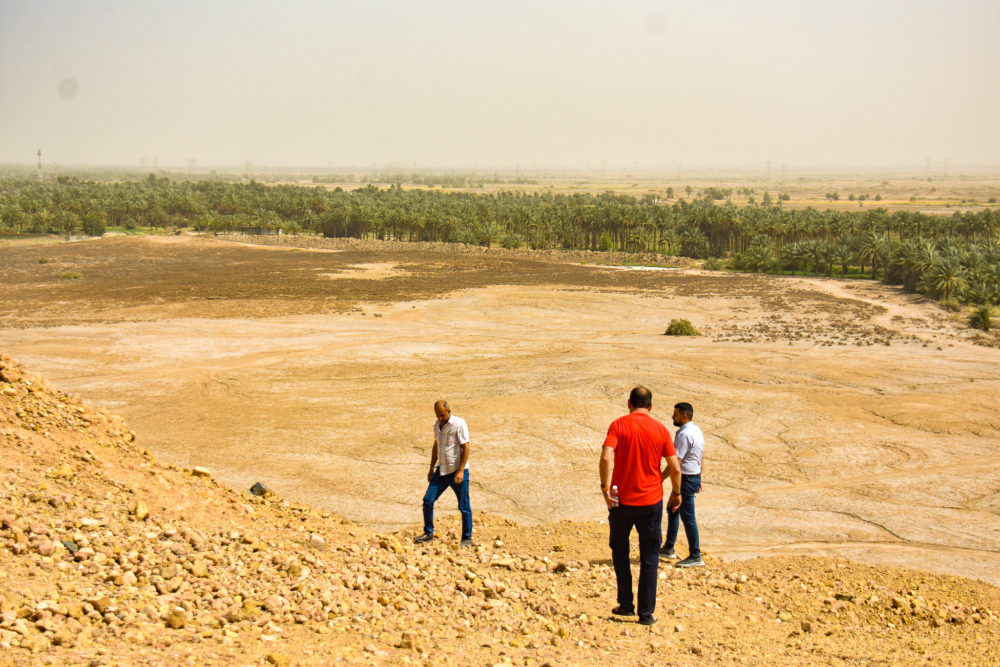
After visiting the tower in the 90 degrees plus heat, we visited the nearby mosque, which was believed to have some kind of connection to Abraham, where free water and a beef, vegetable stew was being handed out for free to worshippers. I didn’t try the stew, but the water sure did taste good.
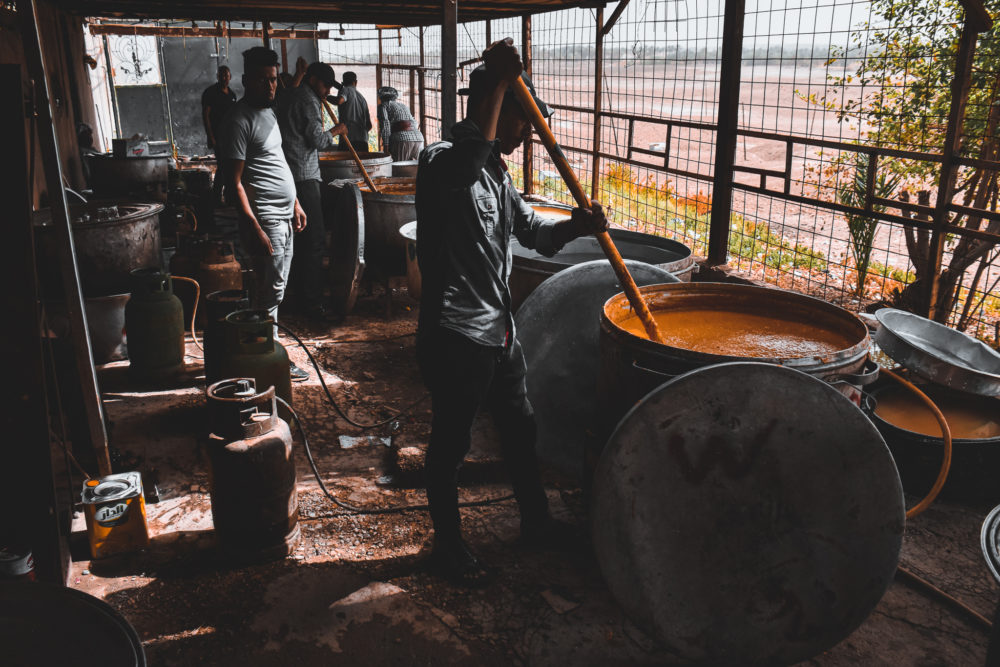
Volunteer workers in the mosque making a stew in heated pots despite the 90 degrees plus heat outside to give away free to worshippers.
We visited the mosque for a few minutes, no cameras allowed inside and then proceeded to walk through the towns ancient covered bazaar, which was more interesting. We sat in the shade on abench drinking a cold Fanta, we bought from a street vender selling cold drinks. Bahaa learned that the vender has a wooden leg because he lost his leg to a land mine in the Iran/Iraq war when he ws young. He was one of the lucky survivors. Over 500,000 iraqi’s did not return from the senseless war that Saddam waged agaist Iran.
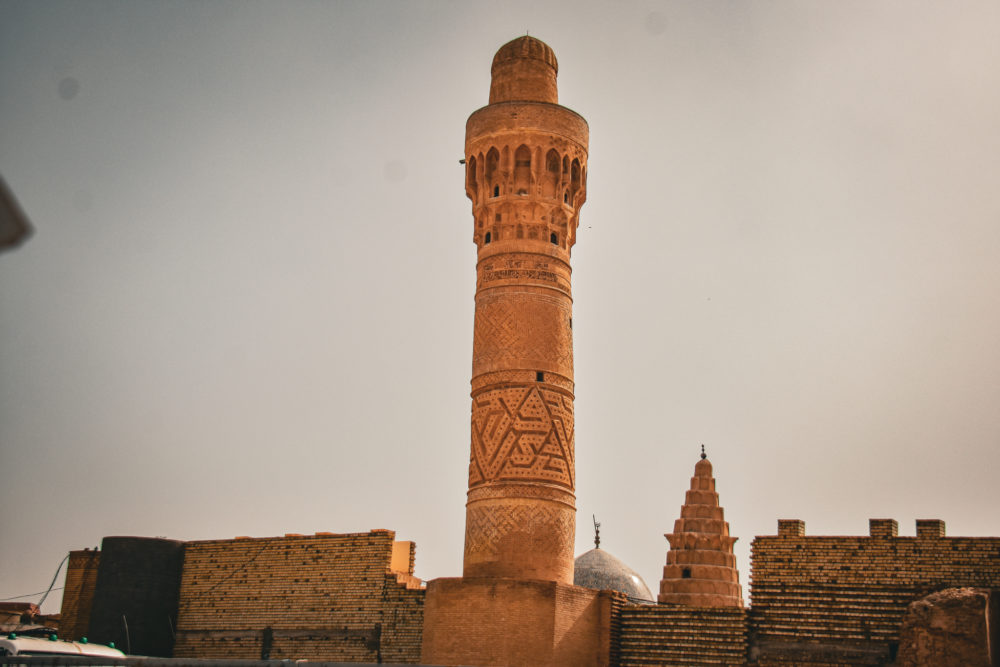
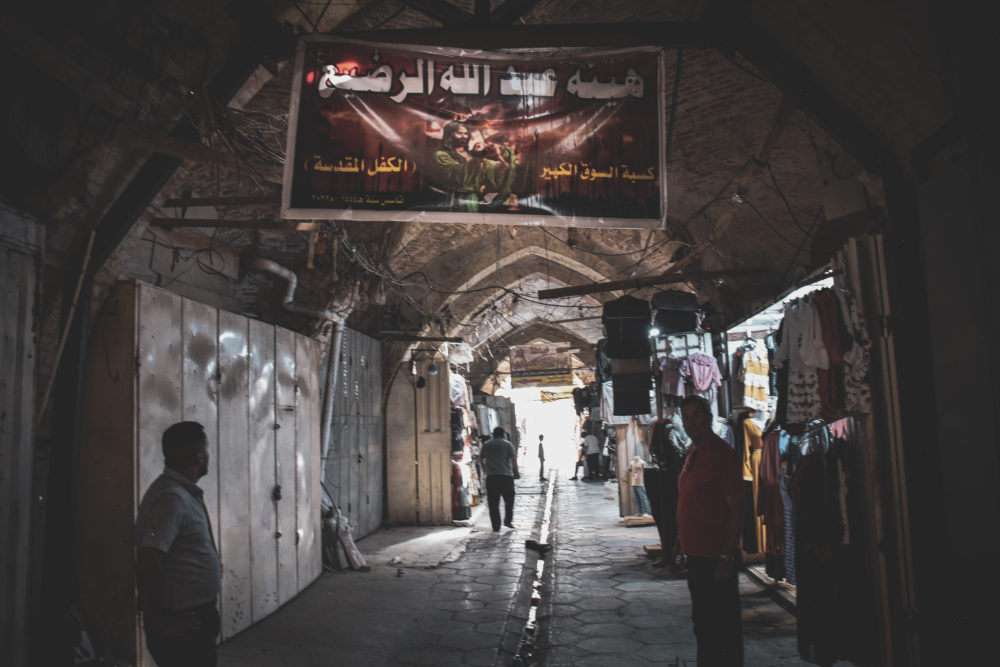
On our 2nd night, Bahaa took us out to dinner in town with his brother and friends and we had a good time trying different Iraqi dishes. The favorite dish, which I politely declined since I stopped eating red meat years ago was Pacha, a traditional Iraqi dish made from sheep’s head, trotters, and stomach; all boiled slowly and served with bread sunken in the broth. The cheeks and tongues are considered the best parts. Jimmie however agreed to try it and for this reason Bahaa drove miles away to a restaurant that specialized in the dish. When the sheep head was served, everyone waited in anticipation as Jimmie tried it and after a few bites Jimmie provided a very brutal review of the popular Iraqi dish, ” sorry, this is terrible, and I can’t eat it.” My initial reaction was concern but I was relieved when everyone started to laugh. Bahaa’s friends scarfed down their portions of sheep head and Bahaa too Jimmie and I to find a falafel restaurant. Afterwards we met up along the banks of the Euphrates River for some non-alcoholic Mexican Margaritas, which actually tasted great.
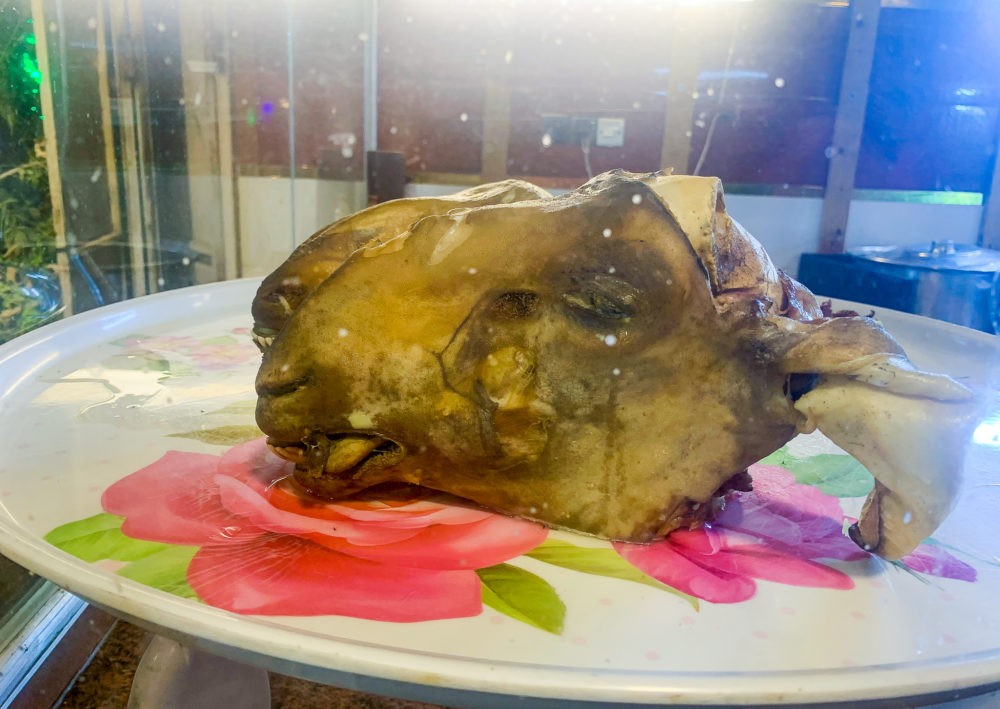
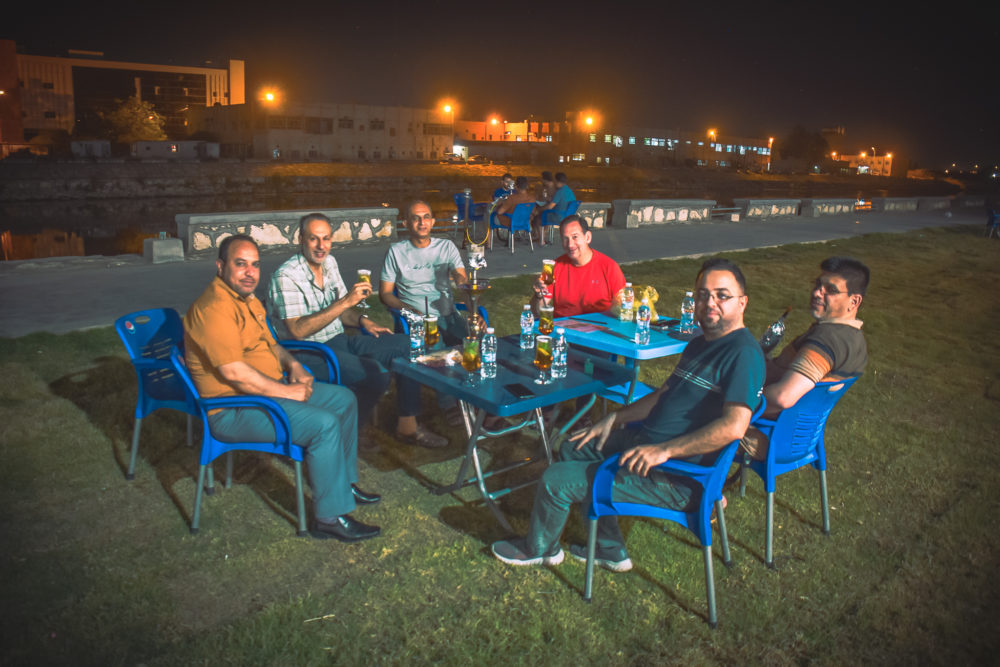
On our 3rd day in Iraq, Bahaa took Jimmie and I to a 1000-year-old Abbasid fortress in the middle of the desert 50 km from Karbala. We had to cross multiple Federal police checkpoints, have our passports examined and face some questioning from military intelligence, especially as we passed through Karbala, but we had no real difficulty with the police.
The fortress was another ancient structure that was restored by Saddam and built with bricks stamped with Saddam’s name. Unlike Babylon, the fortress was well restored and and maybe this was because there was more intact of the original structure to begin with.
The location of the fortress in the middle of the desert was a bit of a mystery but one theory was that it guarded the crossroads between Arabia and the river valleys of the Tigris and Euphrates Rivers.
The fortress with its towering walls had an empty haunted feeling to it and as was always the case in Iraq, we had it to ourselves and we were free to wander at will exploring its enchanting quarters.
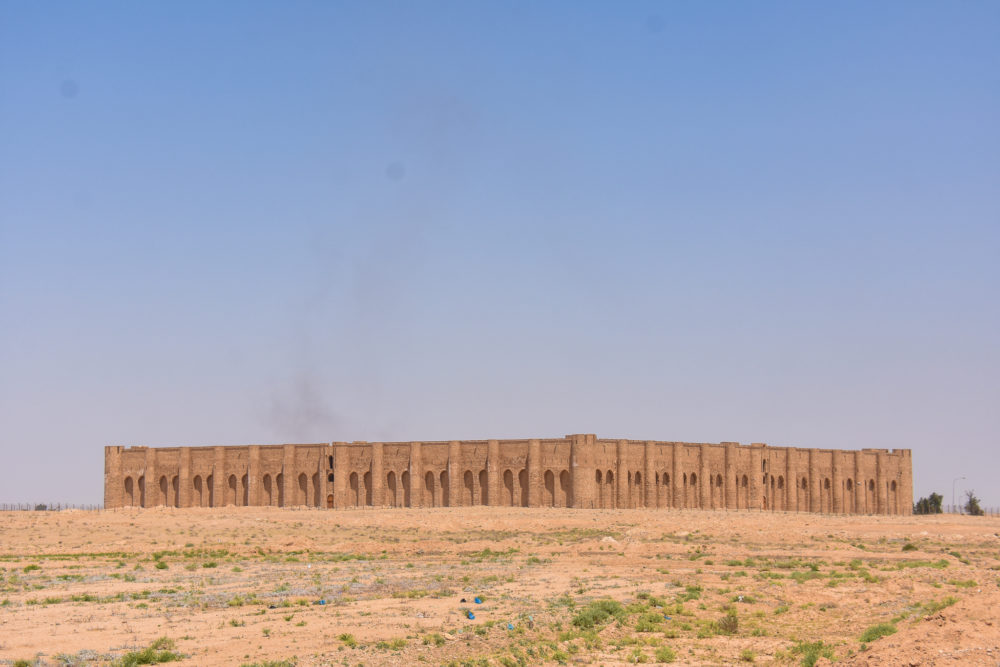

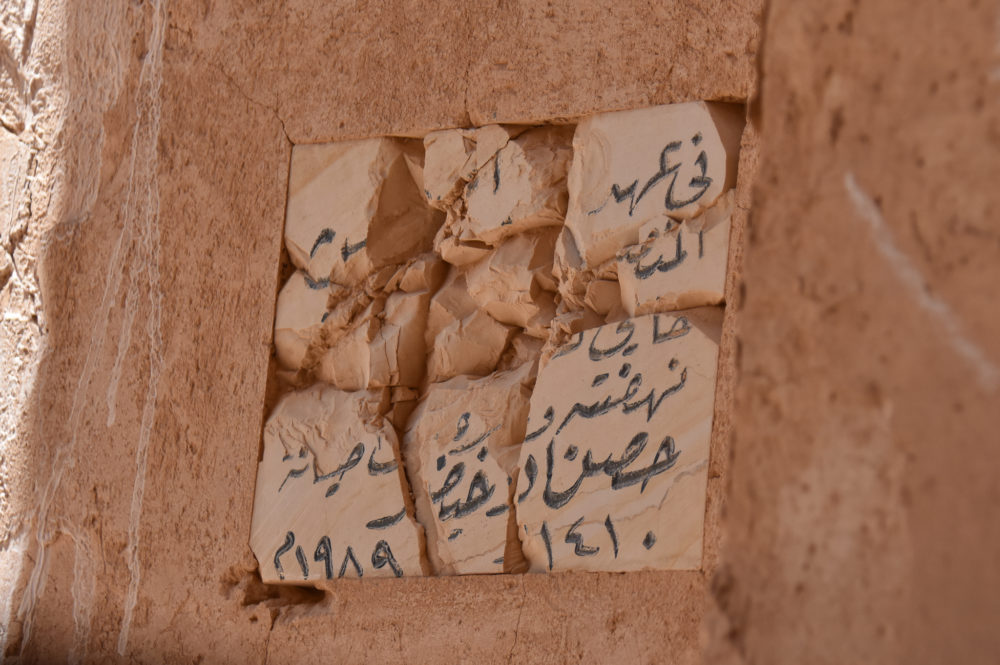
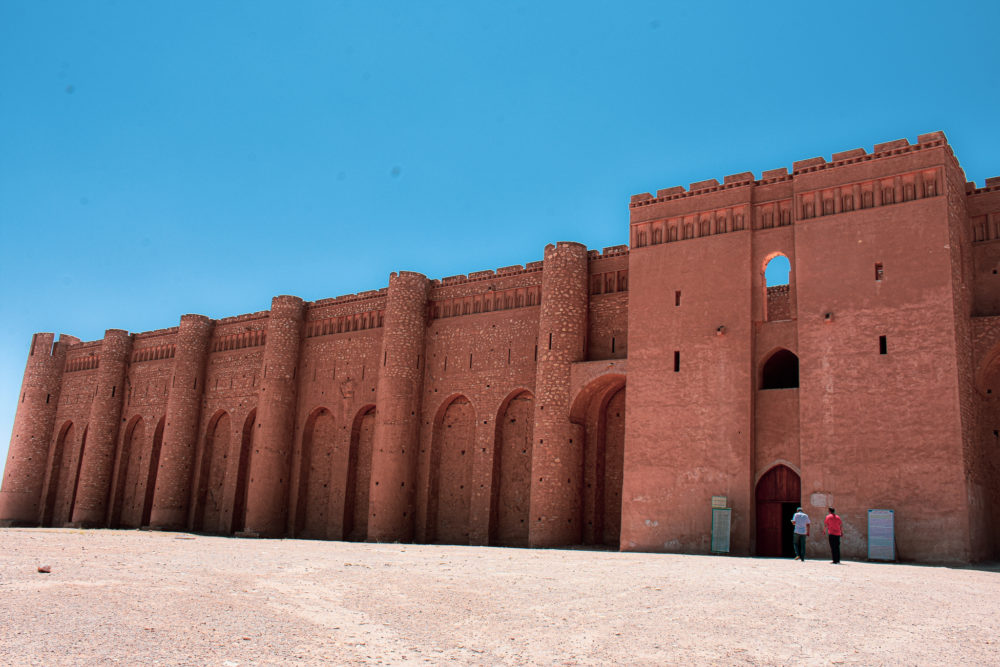
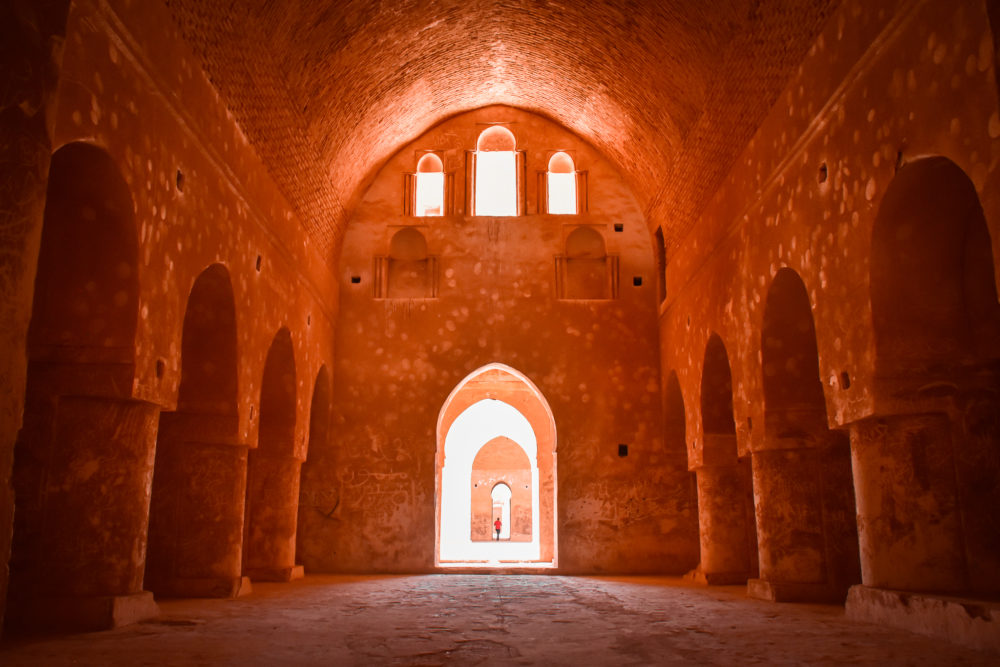
Golden Light Inside the Great Hallways of the Fort


Ghostly Wild Barn Owls Living Inside the Fort that I stalked for a Photo.
A man who worked in then fortress showed us where the dungeon was located to keep prisoners. When I made an immediate bee line for the dungeon the man swiftly warned us not to enter because of dangerous snakes. This just encouraged me to go even more, and the man disappeared to avoid being held responsible if we were harmed by snakes. The inside of the dungeon was cool and dark and definitely a habitat for snakes, but I didn’t find any. There were however hundreds of cannon balls lying all over the ground.

While I was exploring on my own, I encountered a man who is the ground keeper for the fortress. he explained that his father was the ground keeper and now he is. I found a dark pit through another small entrance, and I asked the man what was inside, and he showed me a photo of a venemous snake he took on his phone just that morning. This time when I tried to enter my friend Bahaa out of concern blocked me from descending the steps. This time I reluctantly agreed. The groundskeeper showed Jimmie and I another dark room where he said a colony of small thumb sized tomb bats were living. As soon as we entered, they fluttered around our heads and quickly made an exodus from the room.
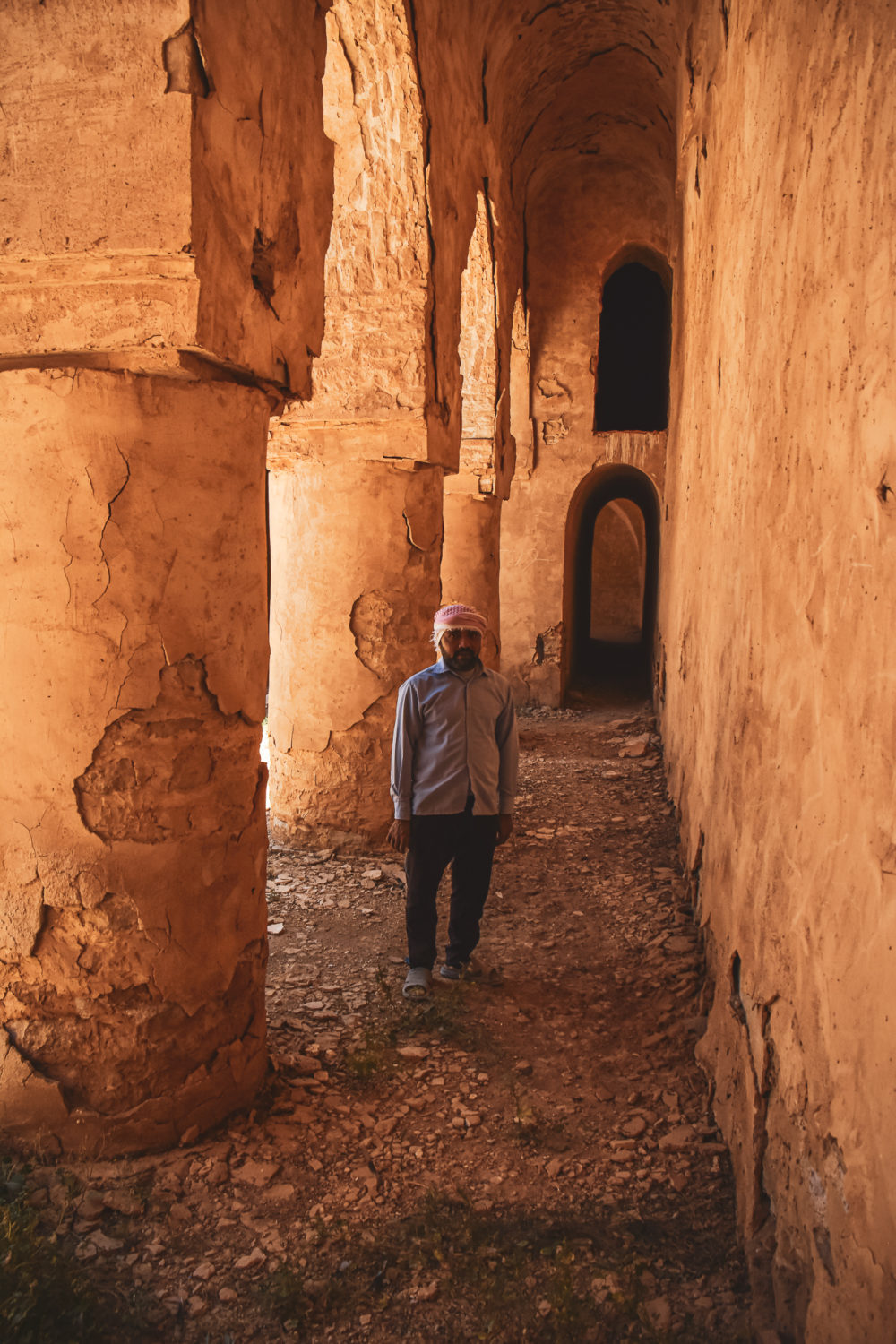
grounds keeper whose father was also groundskeeper before him.
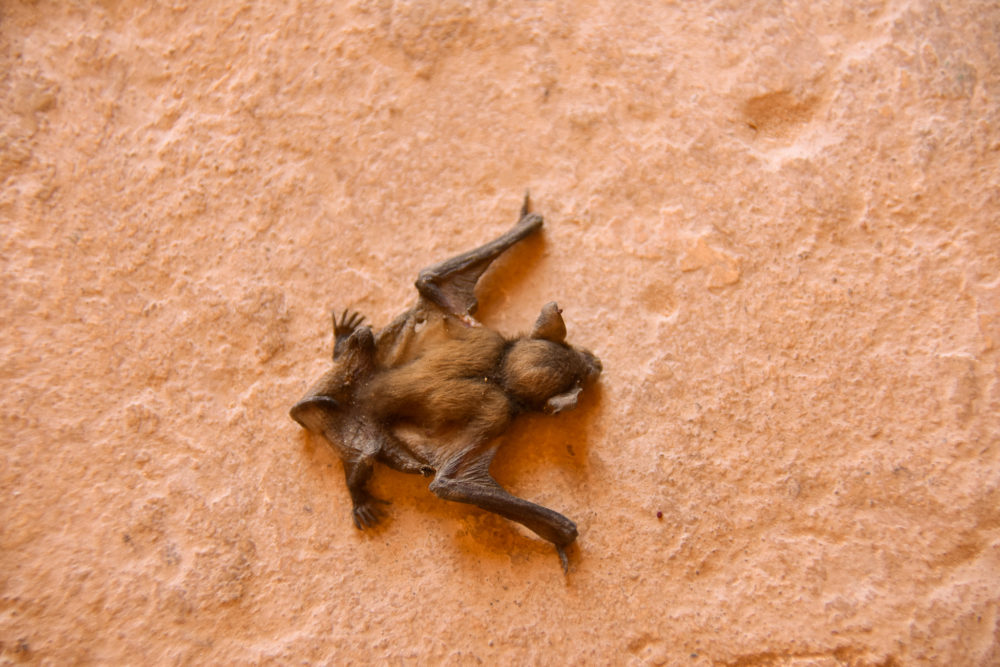
A tomb bat that fell to the ground
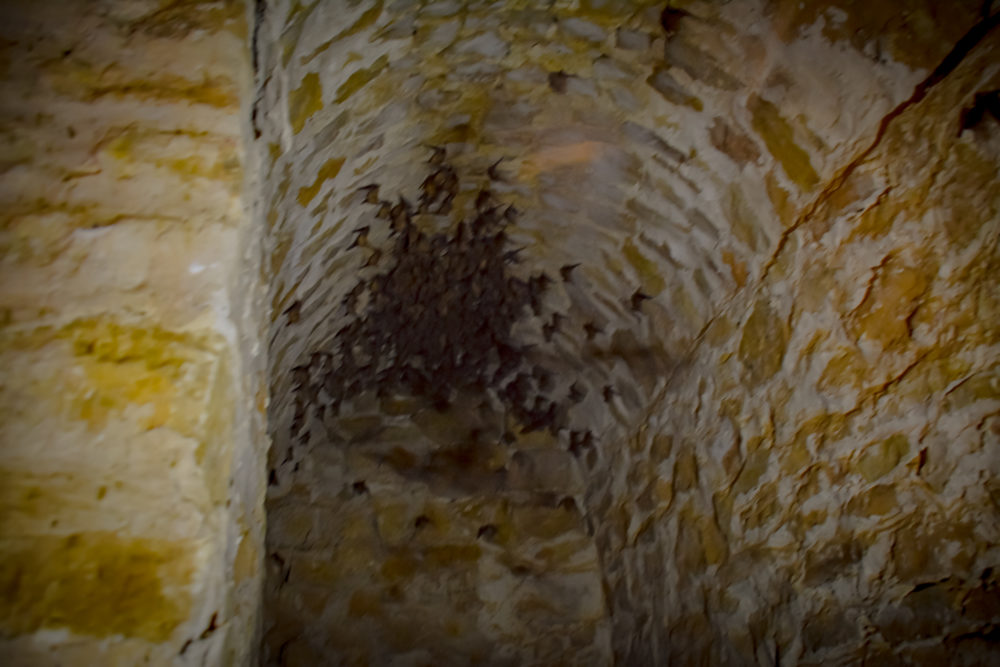
Colony of tomb bats
While driving back through Karbala we stopped at the Imam Husayn Shrine, where he is entombed and the 3rd holiest place to Shiite Muslims. Imam Husayn was the grandson of Muhammad and believed by the Shiites to be the successor of Muhammad-the 3rd Imam. The mosque is near where Imam Husayn was martyred in battle by those that disagreed that he was Muhammeds successor, and the battle helped solidify the rift that formed in Islam between Shiites and Sunnis that has led to conflict between the two denominations ever since.
Karbala, long known as the holiest city to Shiite Muslims is more conservative than other cities in the region and it is common to see women fully covered black niqabs. Additionally, Karbala and its religious pilgrims have been the targeted over the years because it is a holy Shiite city. First by Saddam Hussein, who was Sunni and oppressed the Shiite populations with his army and scud missiles in the 90s. Then again during the chaotic post Saddam period from suicide attacks by ISIS and El Qaida that have killed thousands of innocent victims in Karbala, especially during religious festivals.
Non-Muslims are allowed to enter the Imam Husayn Shrine, but security is very strict and SLR cameras are not allowed inside the checkpoints due to the risk of more suicide bombings. Sadly, the mosque and its pilgrims have been attacked on numerous occasions in the past by ISIS suicide bombers. Even my friend Bahaa witnessed an ISIS suicide bombing in his hometown, which killed dozens of pilgrims marching on foot to Karbala during Ashura.
Once inside the mosque, we turned in our shoes to a holding room, received a number to pick them up later on and we entered the air-conditioned ornate interior of the mosque, where hundreds of worshippers prayed while an Imam sang praises to Allah. Deeper inside the mosque is the final resting spot of Imam Husayn, where worshippers stand place their hands on the tomb giving their respects.

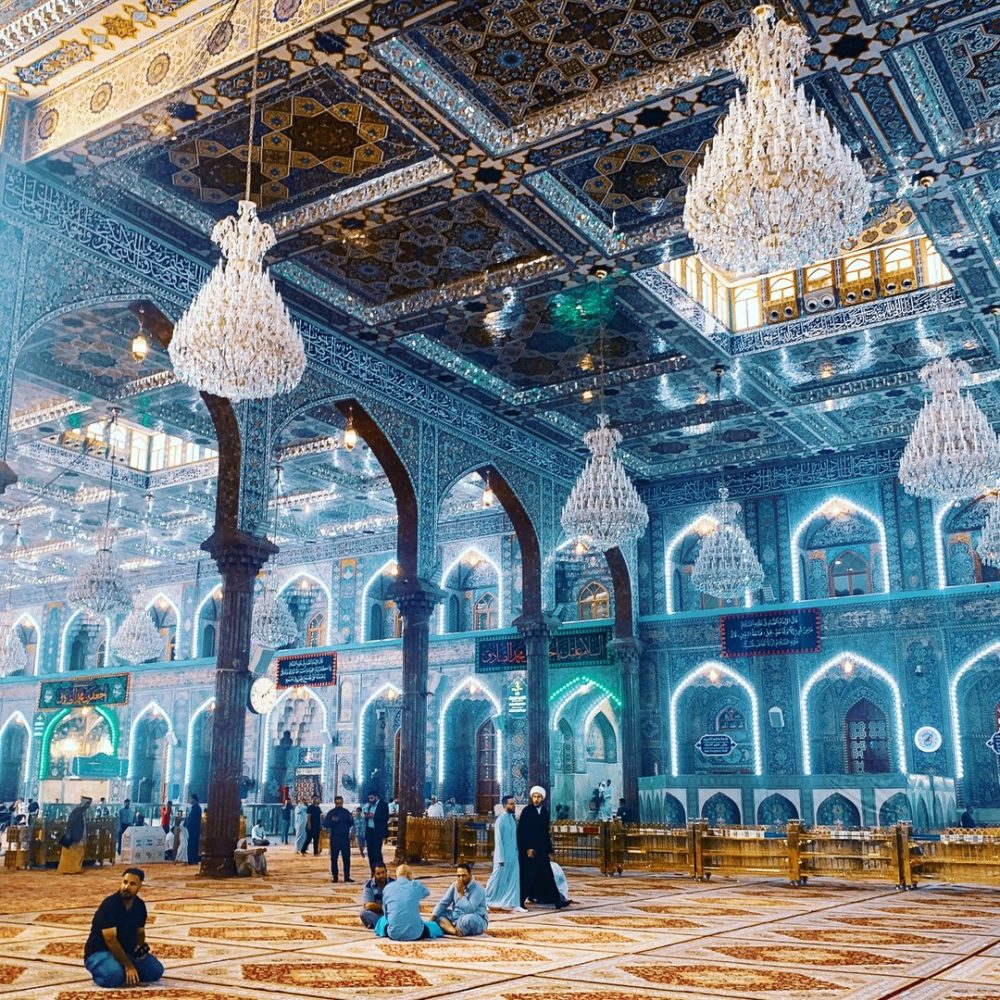

Imam Husayn Tomb
After Karbala, we said goodbye to Bahaa and took a 2-hour taxi ride to the Baghdad airport and onward Qatar Airways flight to Doha and Nepal driving at times at breakneck speeds of 100 mph or more. In Iraq it wasn’t kidnapping or ISIS that worried me, it was the driving. Iraq is one of the top ten deadliest places in the world to drive and deservedly so. Traffic laws along with seat belts were non-existent and there were few women drivers leaving only men and their testosterone induced competitive driving. Highways are not marked with lanes and cars drive wherever they want. Drivers with any empty stretch of road would gas the accelerator while other cars would turn blindly into a street in front of them, vehicle commonly overtake one another sometimes via the shoulder at high speed and driving in Iraq felt like racing in the Indy 500 and I was constantly worried about being caught in a wreck. To make matters worse, every other car in Iraq was a turbo charged American made Dodge Challenger capable of high speeds. Despite the chaos of driving, there is no doubt that the drivers are well skilled.
